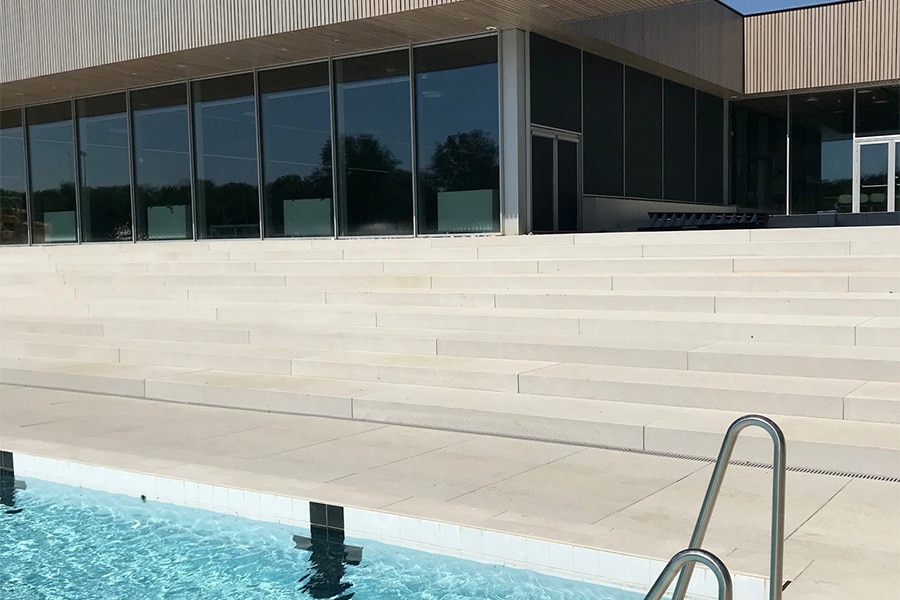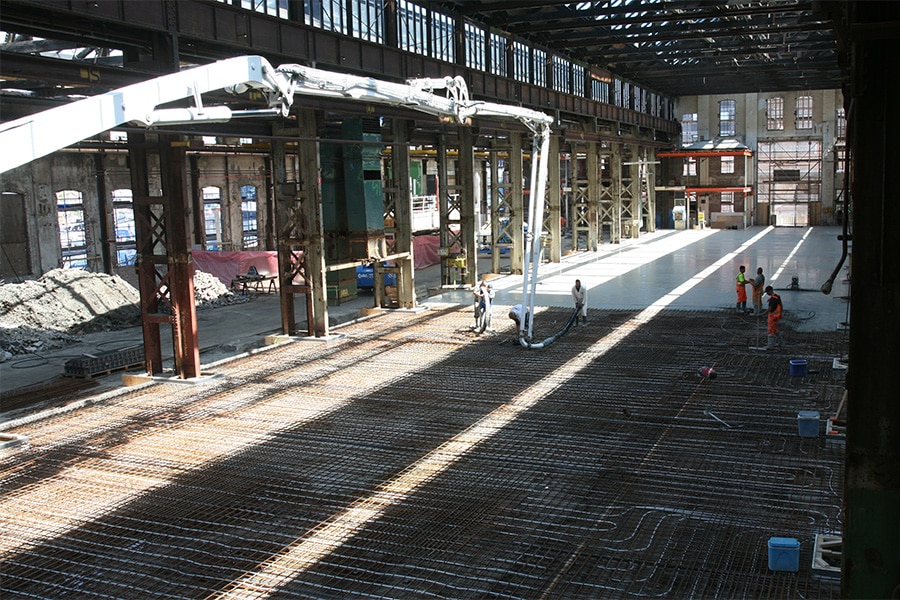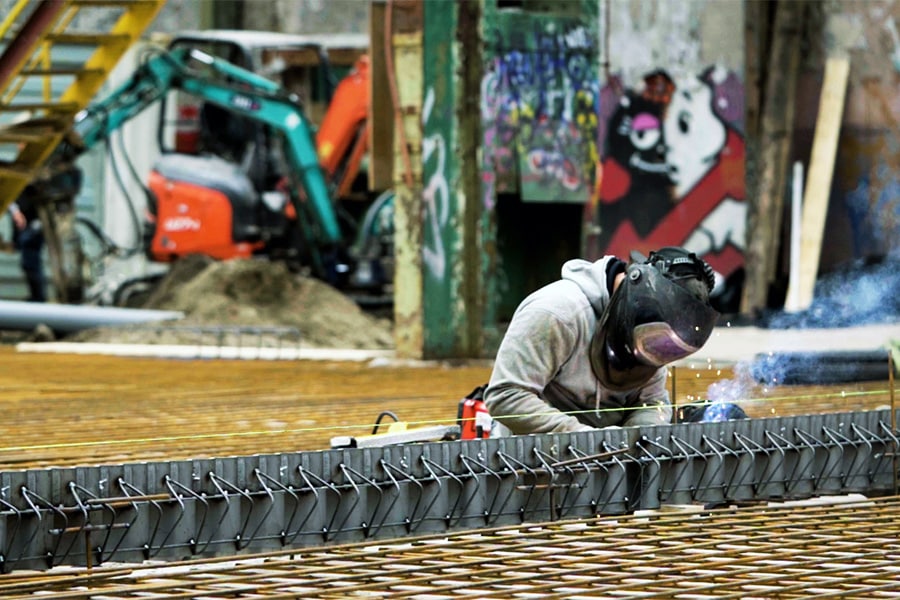
'Green' poured floor for Ecodorp Boekel
Thanks to the "green" nature of eco2floor, maximum CO2 reduction is also achieved for the poured screed. An interview with the face behind eco2floor: product manager Mirjam Rubingh and the supplier, Bert Busgen of Jansen Beton from Son.
For Ecodorp Boekel, the building pioneers of contractor ECO+BOUW and the eager future residents have joined forces to point building Holland in a new, green direction. The new village consists of a group of three round buildings with twelve homes each. The largely natural building materials are almost one hundred percent part of the natural or technological cycle (circular). Both the wood used and the natural insulation materials retain CO2, so much so that the total construction will ultimately be climate-positive.

Favorable MKI value
The foundation of the new village was supplied by Jansen Concrete. "The three circles are founded on a slab foundation of geopolymer concrete," Busgen explains. "It is a sustainable alternative to cement-based concrete that releases eighty percent less CO2. Initially, the plan was to also make the screed in geopolymer concrete, but no one really had experience with it. Moreover, it was not practical, given the relatively limited area of each floor. We then presented to the building collective a good alternative with hardly any cement in the mix and therefore an almost comparable MKI value: eco2floor." The poured floor eco2floor, based on the use of ground granulated blast furnace slag as a binder, offers many advantages over existing flooring technologies.

Sustainable
"Because we use hardly any cement in the eco2floor mixture, the CO2 emissions are significantly lower than with a traditional sand-cement screed," Rubingh says. "eco2floor causes much less inconvenience on site, has low shrinkage, is walkable after about 24 hours and loadable after about 72 hours. Due to a better enclosure around the underfloor heating hoses compared to a traditional screed, the efficiency of the heating system improves. eco2floor is also labor-friendly to process and virtually self-levelling, so it is easy to achieve a better flatness class. The concept also fits perfectly with the trend toward circular construction. At the end of its service life, after a building is demolished, the eco2floor screed can simply be recycled along with the concrete rubble."
National network of power plants
The preparation involved extensive consultation between ECO+BOUW, Ecocem, Jansen Beton and Pieter Rook of RM Vloeren, an approved processor since the early beginnings of eco2floor. "Pieter in particular made an important contribution and laid down good advice in the basics," says Busgen. "In the end, BBM Vloeren from Riel realized the poured screeds." Rubingh: "eco2floor is available through a national network of plants in the Netherlands, including Jansen Beton in Son. Each plant has its own 'circle' of floor workers who have been extensively trained by us. For this project, Jansen Beton delivered just under 200 m³ of the eco2floor mix in three phases."
More and more contractors are seeing the benefits of Ecocem's sustainable poured screed. The share of eco2floor in the screed market will increase rapidly in the coming years.



